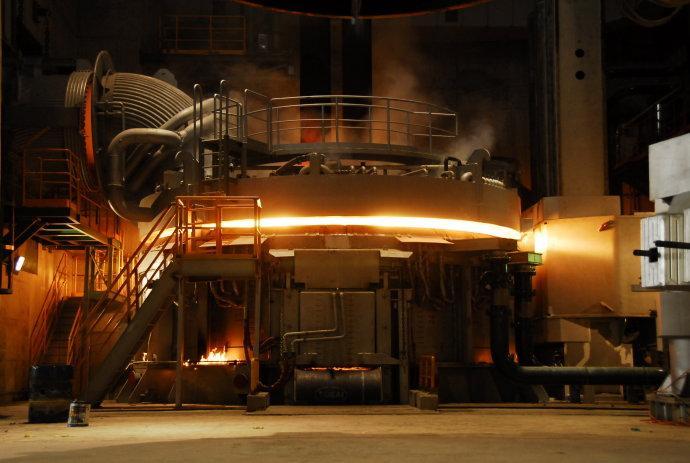The Role of Graphite Electrodes in Electric Arc Furnace Steelmak
Electric arc furnace (EAF) steelmaking stands as a cornerstone in the modern steel industry, offering a myriad of benefits over traditional methods. At the heart of this innovative process lies the crucial component known as graphite electrodes. Let's delve into the indispensable role played by graphite electrodes in the realm of EAF steelmaking.

Graphite electrodes serve as conduits for electrical energy within the EAF, where scrap steel is melted and refined to produce high-quality steel. These electrodes, typically manufactured using specialized grades of needle coke and other raw materials, boast exceptional thermal and electrical conductivity, allowing them to withstand the extreme temperatures and rigorous conditions encountered during steelmaking operations.
One of the primary functions of graphite electrodes is to generate the intense heat necessary for melting the scrap steel charge within the EAF. As electric current passes through the electrodes, resistance heating occurs at the electrode tips, resulting in temperatures exceeding 3000 degrees Celsius. This intense heat rapidly melts the scrap steel, facilitating the homogenization of the molten metal and the removal of impurities through oxidation and slagging processes.
Moreover, graphite electrodes play a pivotal role in controlling the steelmaking process within the EAF. By precisely adjusting the electrical power supplied to the electrodes, operators can regulate the temperature and chemistry of the molten steel, ensuring the production of steel with the desired composition and properties. This level of process control enables steelmakers to meet stringent quality standards and produce a wide range of steel grades tailored to specific customer requirements.
In addition to their role in steelmaking, graphite electrodes contribute to the overall efficiency and sustainability of EAF operations. Unlike traditional steelmaking methods, which rely on primary iron ore as the primary feedstock, EAFs utilize scrap steel as the main raw material. This reliance on recycled scrap not only reduces the environmental impact associated with mining and processing virgin materials but also promotes resource conservation and waste reduction.
Furthermore, the use of graphite electrodes in EAF steelmaking offers operational advantages such as increased production flexibility, reduced energy consumption, and lower greenhouse gas emissions. The inherent scalability of EAF technology allows steel producers to adapt quickly to changing market conditions and produce steel in smaller batch sizes, minimizing inventory costs and improving supply chain efficiency.
In conclusion, graphite electrodes play an indispensable role in the modern steel industry by enabling efficient, flexible, and sustainable steelmaking processes within electric arc furnaces. As steelmakers continue to embrace technological advancements and environmental stewardship, the demand for high-quality graphite electrodes is poised to remain strong, driving innovation and progress in EAF steelmaking for years to come.





